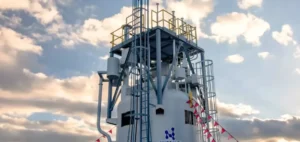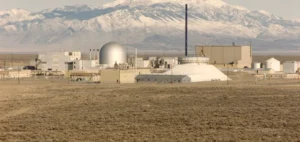New measurements taken Thursday outside the Framatome plant in Romans-sur-Isère (Drôme) “have not shown any traces of abnormal radioactivity”, the day after the fire that affected this industrial site where uranium is stored, told AFP the Institute for Radiation Protection and Nuclear Safety (IRSN), responsible for carrying out these controls.
“Field measurements of contamination and Gamma dose rate have been carried out and have not shown any traces of abnormal radioactivity,” said IRSN, which had sent a team from its office in the suburbs of Avignon to carry out measurements in the environment, “in the immediate vicinity of the site”.
At the same time, IRSN took samples of grass, soil and smears (surfaces where atmospheric dust is rubbed) in order to carry out more precise measurements in its laboratories in the Paris region, the results of which should be known in the next few days. In addition, measurements will be made on the aerosol filter of an air monitoring station located near the Framatome plant.
The IRSN described these additional controls as “reassurance measures”. A fire started by a printer affected a workshop containing uranium on Wednesday, but “no radioactive substance” had been affected, according to the French nuclear safety authority (ASN).
The incident lasted for about an hour before being extinguished at the plant, which employs 950 people in the manufacture of fuel for reactors, both for nuclear power plants and research centers.






















